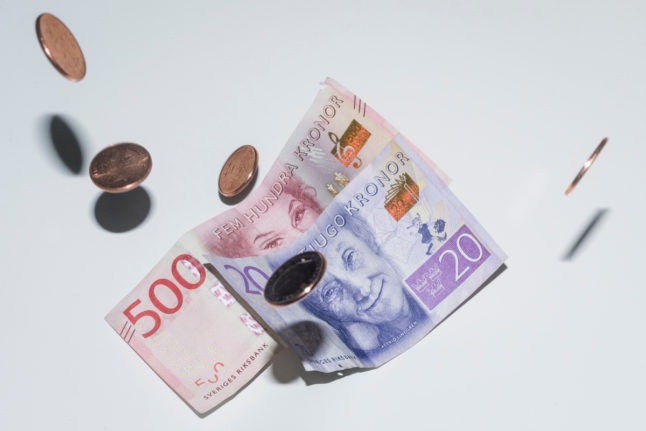What is an ISK?
ISKs, literally ‘investment savings accounts’ were introduced in 2012 as a way for people in Sweden to easily invest in shares and funds. An estimated 3.5 million people in Sweden have an ISK, with 75 percent of these accounts having a balance of 300,000 kronor or less.
How are they currently taxed?
They’re not subject to capital gains tax, but they are instead taxed at a fixed rate – known as schablonsskatt – an annual rate paid on the entire value of the sum held.
This differs from traditional AFs, where AF stands for aktie- och fondkonto or “share and fund account”, where any profits or losses on the sale of shares throughout the year must be declared individually in your yearly tax declaration.
If you have an ISK, you pay tax of 1.086 percent on your savings under current rules, which – to put it simply – means if you had 100,000 kronor invested you’d have a yearly ISK tax bill of 1,086 kronor, which you would pay whether your portfolio made a profit or not. Any figures needed for tax purposes are automatically added to your tax declaration by your bank, so there’s no need to do this yourself.
There’s a third type of investing savings account – a kapitalförsäkring or KF, which is an insurance product where shares, funds and other savings are held in your name by a bank or insurance company. A KF differs slightly from an ISK, but they are subject to the same amount of tax (although you might need to pay tax on a KF each quarter rather than each year).
As a general rule, it makes financial sense to invest through an ISK or KF rather than another type of investment-based savings account if your yearly returns exceed the government loan rate – statslåneräntan – plus one percentage point. The government loan rate was raised to 2.62 percent at the end of 2023, meaning you should aim for your ISK or KF to have an average return of at least 3.62 percent.
In an AF, you pay 30 percent tax on any profit you make through sold shares in a tax year. If you make a loss, you pay nothing at all.
How do I open one?
Most consumer banks in Sweden, like Swedbank, SEB and Handelsbanken, offer ISKs and KFs, as well as specialist stockbrokers like Avanza or Nordnet, which are often significantly cheaper.
It’s somewhat less convenient to have your savings in a separate place to your bank account, but this can also be a good thing if you’re the kind of person who is tempted to sell your shares or funds at the slightest sign of a downturn.
It’s relatively easy to set up an automatic investment each month from your salary account to an ISK, even if these are in different banks.
You can often open an ISK in minutes via mobile banking on your phone, although it’s a good idea to do your research first and compare fees between providers before you open one – small differences in fees can make a huge difference if you’ll be saving over an entire lifetime.
Having said that, it’s a good idea to be aware of specific rules in your home country, especially if you are still eligible to pay tax there.
In the US, for example, ISKs are very difficult to report to tax authorities, and you may be penalised for owning mutual funds over a certain amount – which is common both in ISKs and KFs.
How would the new proposal change things?
Under a new proposal, which has been co-authored by the government and the Sweden Democrats, tax on ISKs and KFs would be scrapped for any accounts where savings are less than 300,000 kronor. Currently, an ISK with 300,000 kronor saved would cost 3,258 kronor in tax in a calendar year, so it’s a sizeable saving for those with a balance above this amount.



 Please whitelist us to continue reading.
Please whitelist us to continue reading.
Member comments